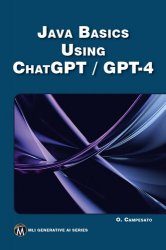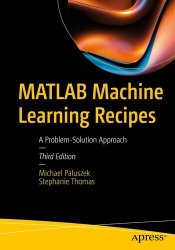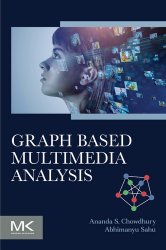|
 |
|
 |
|
|
 |
|  |
|
 Название: Unity from Zero to Proficiency (Foundations): A step-by-step guide to creating your first 3D and 2D game environments, 5th Edition Название: Unity from Zero to Proficiency (Foundations): A step-by-step guide to creating your first 3D and 2D game environments, 5th Edition
Автор: Patrick Felicia
Издательство: LPF Publishing
Год: 2023
Страниц: 236
Язык: английский
Формат: epub (true)
Размер: 12.7 MB
Are you ready to create your own epic games? This book is your ultimate ticket to mastering Unity game development. Updaded in July 2023: All chapters and assets are fully compatible with Unity 2022+. Are you ready to turn your gaming passion into reality? This book is your ultimate guide to mastering Unity game development. No prior experience needed! Dive into the exciting world of Unity and learn step-by-step how to design captivating 2D and 3D environments, program engaging gameplay mechanics, and create stunning visual effects. Imagine building your dream games and impressing friends and potential employers with your skills. This book series equips you with the essential knowledge and hands-on practice to become a confident Unity developer. Don't miss out on this opportunity! Join the thriving game development community and bring your imagination to life. Grab your copy of this book now and embark on your journey to becoming a pro Unity developer! This book series assumes no prior knowledge on the part of the reader, and it will get you started on Unity so that you quickly master all the wonderful features that this software provides by going through an easy learning curve. By completing each chapter, and by following step-by-step instructions, you will progressively improve your skills, become more proficient in Unity, and create a survival game using Unity’s core features in terms of programming (i.e., C#), game design, and drag and drop features. | |
Разместил: Ingvar16 12-08-2024, 15:10 | Комментарии: 0 | Подробнее
| | | |
 |
|  |
 |
|
 |
|
|
 |
|  |
|
 Название: Digital Shakedown: The Complete Guide to Understanding and Combating Ransomware Название: Digital Shakedown: The Complete Guide to Understanding and Combating Ransomware
Автор: Harry Halikias
Издательство: Springer
Год: 2024
Страниц: 126
Язык: английский
Формат: pdf (true), epub
Размер: 18.7 MB
This book is a comprehensive review of ransomware that covers ransomware from every angle. It presents origins, components, purpose, impacts, relevant laws, prevention techniques and proposed solutions. This book also introduces novel concepts such as the Three Cs of Ransomware and The Great Shut Down, Reboot, Pull the Plug Debate. This indispensable book provides readers with the most comprehensive information regarding ransomware ever assembled. It distils technical, legal, and practical topics in a style that is both readable and usable. Offering a thorough and compelling new perspective on ransomware, this invaluable resource benefits business leaders, IT professionals, security and privacy experts and legal practitioners. Students, and anyone seeking to understand this critical issue will want to purchase this book. It is a concise, contemporary, and compelling new perspective on ransomware that will help frame decisions for corporations and policymakers alike. | |
Разместил: Ingvar16 12-08-2024, 06:37 | Комментарии: 0 | Подробнее
| | | |
 |
|  |
 |
|
 |
|
|
 |
|  |
|
 Название: Java Basics Using ChatGPT/GPT-4 Название: Java Basics Using ChatGPT/GPT-4
Автор: Oswald Campesato
Издательство: Mercury Learning and Information
Год: 2024
Страниц: 345
Язык: английский
Формат: True PDF, True EPUB
Размер: 10.1 MB
This book is designed for those new to Java and interested in understanding how ChatGPT/GPT-4 can enhance programming. It offers a unique approach to learning Java, combining traditional hand-written code with cutting-edge ChatGPT-generated examples. The book covers the basics of Java programming and development environments, including understanding recursion, strings, arrays, fundamental data structures, algorithm analysis, queues and stacks, and follows with the role of ChatGPT in generating, explaining, and debugging code. Companion files with source code and figures available for downloading. It’s an essential resource for those starting Java programming and for anyone curious about the applications of ChatGPT in coding. First and foremost, one of the most compelling reasons for using ChatGPT is the speed at which it can generate code. While hand-written code often requires a substantial amount of time for planning, writing, and debugging, ChatGPT can produce functional code snippets in a matter of seconds. This rapid code generation can be especially useful in the development phase, allowing for quick prototyping and testing of ideas. It’s an efficient way to explore multiple solutions to a problem, thereby streamlining the development process. Secondly, the code generated by ChatGPT serves as an interesting contrast to hand-written code. While hand-written code often reflects the individual styles and best practices adhered to by professional programmers, ChatGPT-generated code offers a different perspective. This can lead to insightful discussions on code efficiency, readability, and maintainability. This book is intended primarily for people who have limited exposure to Java and are interested in learning about data structures. | |
Разместил: Ingvar16 11-08-2024, 17:55 | Комментарии: 0 | Подробнее
| | | |
 |
|  |
 |
|
 |
|
|
 |
|  |
|
 Название: MATLAB Machine Learning Recipes: A Problem-Solution Approach, 3rd Edition Название: MATLAB Machine Learning Recipes: A Problem-Solution Approach, 3rd Edition
Автор: Michael Paluszek, Stephanie Thomas
Издательство: Apress
Год: 2024
Страниц: 458
Язык: английский
Формат: pdf (true), epub (true)
Размер: 54.8 MB
Harness the power of MATLAB to resolve a wide range of Machine Learning challenges. This new and updated third edition provides examples of technologies critical to Machine Learning. Each example solves a real-world problem, and all code provided is executable. You can easily look up a particular problem and follow the steps in the solution. This book has something for everyone interested in Machine Learning. It also has material that will allow those with an interest in other technology areas to see how Machine Learning and MATLAB can help them solve problems in their areas of expertise. The chapter on data representation and MATLAB graphics includes new data types and additional graphics. Chapters on fuzzy logic, simple neural nets, and autonomous driving have new examples added. And there is a new chapter on spacecraft attitude determination using neural nets. Authors Michael Paluszek and Stephanie Thomas show how all of these technologies allow you to build sophisticated applications to solve problems with pattern recognition, autonomous driving, expert systems, and much more. | |
Разместил: Ingvar16 11-08-2024, 16:06 | Комментарии: 0 | Подробнее
| | | |
 |
|  |
 |
|
 |
|
|
 |
|  |
|
 Название: Leveraging the Potential of Artificial Intelligence in the Real World: Smart Cities and Healthcare Название: Leveraging the Potential of Artificial Intelligence in the Real World: Smart Cities and Healthcare
Автор: Tien Anh Tran, Edeh Michael Onyema, Arij Naser Abougreen
Издательство: CRC Press
Год: 2025
Страниц: 144
Язык: английский
Формат: pdf (true)
Размер: 12.3 MB
Artificial Intelligence (AI) is reshaping our urban landscapes and healthcare systems. From enhancing efficiency in smart cities to delivering personalized healthcare solutions, AI holds the key to a transformative future. Comprising seven insightful chapters, this book offers a comprehensive overview of key topics shaping the future of healthcare systems and smart cities. This book is a combination of the smart healthcare system and the intelligent transportation system based on AI. From telemedicine’s global accessibility to the application of data-mining techniques in predicting cardiac diseases and detecting anti-malaria drug resistance, each chapter presents cutting-edge research and practical applications. Furthermore, this book explores the integration of advanced AI technologies into healthcare systems, paving the way for cost-effective solutions and innovative approaches. It also delves into the challenges associated with analyzing electroencephalogram data and predicting anxiety and depression among elderly patients, offering promising solutions and insights. This book discusses the realms of smart cities and healthcare, where AI promises to revolutionize efficiency, sustainability, and personalized care delivery. Researchers/scholars and graduate students at universities/research institutes and research engineers in Computer Science, transportation, and engineering industries will find this book beneficial. | |
Разместил: Ingvar16 11-08-2024, 15:22 | Комментарии: 0 | Подробнее
| | | |
 |
|  |
 |
|
 |
|
|
 |
|  |
|
 Название: C Programming: Core Concepts and Techniques Название: C Programming: Core Concepts and Techniques
Автор: William Smith
Издательство: HiTeX Press
Год: 2024
Страниц: 300
Язык: английский
Формат: pdf, azw3, epub, mobi
Размер: 10.1 MB
"C Programming: Core Concepts and Techniques" is an authoritative resource designed to guide beginners through the foundational aspects of C programming. Written with clarity and precision, this book meticulously covers essential topics, ranging from basic syntax and data types to advanced concepts such as pointers, dynamic memory management, and file I/O operations. Each chapter is crafted to build upon the previous one, ensuring a seamless and comprehensive learning experience. With a focus on practical implementation, this book includes numerous examples and exercises that reinforce key concepts and promote hands-on practice. Whether you aim to develop software for embedded systems, undertake performance-critical applications, or enhance your overall programming skills, this book serves as both a valuable educational text and a reliable reference guide, laying a solid foundation for mastering the versatile and powerful C programming language. The legacy of C is evident in its influence on many later programming languages. Languages such as C++, C#, Java, and even modern languages like Go and Rust have drawn heavily from C’s syntax and design principles. The focus on efficiency, portability, and the ability to write system-level code have made C an enduring and highly respected language in the programming community. | |
Разместил: Ingvar16 11-08-2024, 11:45 | Комментарии: 0 | Подробнее
| | | |
 |
|  |
 |
|
 |
|
|
 |
|  |
|
 Название: Modern Tkinter Python for Developers: Design and Build functional and user-friendly GUI applications Название: Modern Tkinter Python for Developers: Design and Build functional and user-friendly GUI applications
Автор: George W New, Leire Verdugo
Издательство: Independently published
Год: 2024
Страниц: 422
Язык: английский
Формат: pdf, epub
Размер: 10.1 MB
Python is one of the most popular and easiest programming languages out there. Learning it -- and mastering the craft -- is a walk in the park when you have the right guidance. Graphical User Interface(GUI) is a form of user interface which allows users to interact with computers through visual indicators using items such as icons, menus, windows, etc. It has advantages over the Command Line Interface(CLI) where users interact with computers by writing commands using keyboard only and whose usage is more difficult than GUI. What is Tkinter? Tkinter is the inbuilt Python module that is used to create GUI applications. It is one of the most commonly used modules for creating GUI applications in Python as it is simple and easy to work with. You don’t need to worry about the installation of the Tkinter module separately as it comes with Python already. It gives an object-oriented interface to the Tk GUI toolkit. Some other Python Libraries available for creating our own GUI applications are: Kivy, Python Qt, wxPython. Among all Tkinter is most widely used. In summary, Tkinter is a useful tool for creating a wide variety of graphical user interfaces, including windows, dialog boxes, and custom widgets. It is particularly well-suited for building desktop applications and adding a GUI to command-line programs. | |
Разместил: Ingvar16 10-08-2024, 16:31 | Комментарии: 0 | Подробнее
| | | |
 |
|  |
 |
|
 |
|
|
 |
|  |
|
 Название: Moral Codes: Designing Alternatives to AI Название: Moral Codes: Designing Alternatives to AI
Автор: Alan F. Blackwell
Издательство: The MIT Press
Год: 2024
Страниц: 239
Язык: английский
Формат: pdf (true)
Размер: 10.1 MB
Why the world needs less AI and better programming languages. Decades ago, we believed that robots and computers would take over all the boring jobs and drudgery, leaving humans to a life of leisure. This hasn't happened. Instead, humans are still doing boring jobs, and even worse, AI researchers have built technology that is creative, self-aware, and emotional—doing the tasks humans were supposed to enjoy. How did we get here? In Moral Codes, Alan Blackwell argues that there is a fundamental flaw in the research agenda of AI. What humanity needs, Blackwell argues, is better ways to tell computers what we want them to do, with new and better programming languages: More Open Representations, Access to Learning, and Control Over Digital Expression, in other words, MORAL CODE. Blackwell draws on his deep experiences as a programming language designer—which he has been doing since 1983—to unpack fundamental principles of interaction design and explain their technical relationship to ideas of creativity and fairness. Taking aim at software that constrains our conversations with strict word counts or infantilizes human interaction with likes and emojis, Blackwell shows how to design software that is better—not more efficient or more profitable, but better for society and better for all people. Covering recent research and the latest smart tools, Blackwell offers rich design principles for a better kind of software—and a better kind of world. In an introductory class in programming, students learn to code. They will be taught the syntax and keywords of some programming language notation, perhaps Python or Java, and will learn how to translate an algorithm into the conventional idioms of that particular programming language. Introductions to Machine Learning are not yet quite as familiar or popular as learn-to-code initiatives, but they are equally accessible to children—I have a friend who teaches Machine Learning methods to eight-year-olds in an after-school club. | |
Разместил: Ingvar16 10-08-2024, 15:43 | Комментарии: 0 | Подробнее
| | | |
 |
|  |
 |
|
 |
|
|
 |
|  |
|
 Название: Graph Based Multimedia Analysis Название: Graph Based Multimedia Analysis
Автор: Ananda S. Chowdhury, Abhimanyu Sahu
Издательство: Morgan Kaufmann/Elsevier
Год: 2024
Страниц: 370
Язык: английский
Формат: epub
Размер: 72.1 MB
Graph Based Multimedia Analysis applies concepts from graph theory to the problems of analyzing overabundant video data. Video data can be quite diverse: exocentric (captured by a standard camera) or egocentric (captured by a wearable device like Google Glass); of various durations (ranging from a few seconds to several hours); and could be from a single source or multiple sources. Efficient extraction of important information from such a large class of diverse video data can be overwhelming. The book, with its rich repertoire of theoretically elegant solutions, from graph theory in conjunction with deep learning, constrained optimization, and game theory, empowers the audience to achieve tasks like obtaining concise yet useful summaries and precisely recognizing single as well as multiple actions in a computationally efficient manner. The book provides a unique treatise on topics like egocentric video analysis and scalable video processing. This book provides a comprehensive and methodical approach to these challenges, underpinned by the rigorous and elegant framework of graph theory. It deftly bridges the gap between the somewhat disparate domains of video processing and graph theory, demonstrating how graph-based methodologies can effectively address critical problems in video summarization, cosummarization, and action recognition. The salient feature of this work is its extensive utilization of graph theoretical concepts. The book covers an impressive array of graph-based methods, including Delaunay graphs, Optimal Path-Forests, Bipartite Graph Matching, Graph Centrality measures, Graph Connectedness, Spectral Measures of Graph Similarity, Minimum Spanning Tree, and Random Walks. The integration of game-theoretic models, constrained optimization techniques, and advanced Deep Learning methods such as Convolutional Neural Networks and Transfer Learning, further enriches the suite of methods presented. | |
Разместил: Ingvar16 10-08-2024, 13:08 | Комментарии: 0 | Подробнее
| | | |
 |
|  |
 |
|
 |
|
|
 |
|  |
|
 Название: Python Programming: Handbook For IoT Development: A Complete Beginners Guide To Learning Essential Skills To Build Connected Devices, Collect Data And Create Innovative Applications Название: Python Programming: Handbook For IoT Development: A Complete Beginners Guide To Learning Essential Skills To Build Connected Devices, Collect Data And Create Innovative Applications
Автор: Hazel Mackay
Издательство: Independently published
Серия: The Python Power Toolkit
Год: 2024
Страниц: 172
Язык: английский
Формат: pdf, azw3, epub, mobi
Размер: 10.1 MB
Unleash the Power of Python for Your Next IoT Project: Python Programming Handbook for IoT Development. Transform your ideas into connected realities with this beginner-friendly guide! The Internet of Things (IoT) is exploding, and Python is the key that unlocks its potential. This handbook is your comprehensive roadmap to mastering Python for building smart, interconnected devices. No prior coding experience necessary! Python, with its simplicity, flexibility, and extensive libraries, has emerged as a language of choice for IoT development. Its versatility and ease of use make it an ideal choice for building robust, efficient, and scalable IoT applications, from smart home devices and industrial automation to wearable technology and environmental monitoring. This handbook is designed to take you on a journey from the basics of Python programming to the cutting-edge techniques and tools used in IoT development. Whether you're a seasoned developer looking to expand your skillset or a beginner eager to dive into the world of IoT, this book provides a clear, concise, and hands-on approach to learning Python programming for IoT development. By the end of this journey, you'll be a confident Python programmer, ready to embark on your own exciting IoT endeavors. | |
Разместил: Ingvar16 10-08-2024, 02:51 | Комментарии: 0 | Подробнее
| | | |
 |
|  |
|